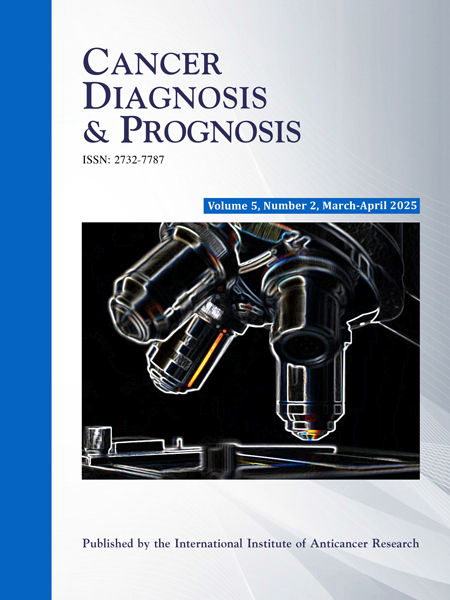
CANCER DIAGNOSIS & PROGNOSIS (CDP) is an international online open-access bimonthly journal designed to bring together original high quality works and reviews on experimental and clinical research advancing knowledge on the diagnosis and prognosis of all types of human cancer, leukemia and metastasis. CDP is aiming at improving prompt disease management and quality of life of cancer patients through a precise early diagnosis and prognosis. CDP is published by the International Institute of Anticancer Research.
CDP provides for the prompt peer review of all submissions and for the online publication of accepted articles within 1-2 months from final acceptance.
The topics of CDP include:
The topics of CDP include:
- Experimental development of new diagnostic and prognostic biomarkers.
- Clinical application of new biomarkers.
- Evaluation of combinations of past and emerging biomarkers.
- Molecular pathology and proteomics in the discovery of new biomarkers and systemic cancer staging.
- Genetic, epigenetic and chromosomal markers.
- Use of biomarkers in the selection of the proper cancer management.
- Use of biomarkers in assessing response, restaging and prognosis after surgery, radiotherapy, chemotherapy and/or immunotherapy.
- Use of diagnostic procedures including combinations of biomarkers and imaging in the selection and assessment of the proper cancer management.
- Novel surgery technologies in improving diagnosis and prognosis.
Dear Colleagues,
Welcome to the new international journal CANCER DIAGNOSIS & PROGNOSIS (CDP) published online – open access by the International Institute of Anticancer Research.
CDP's aim is to disseminate current advances that harness and facilitate cancer patient management and survival.
The Editorial Board of CDP consisting of distinguished researchers in the field of oncology will inspire and guide the journal's content.
Every effort will be made to maintain the highest scientific quality level, while securing wide exposure of the contents worldwide.
I look forward to welcoming you as Authors and Readers of CDP.
Sincerely,
George J. Delinasios
IIAR Director
CDP Managing Editor
